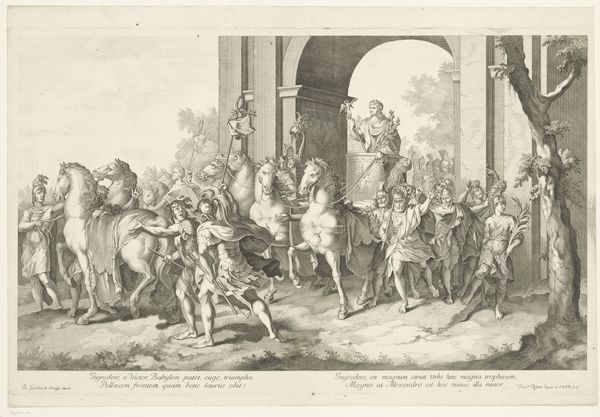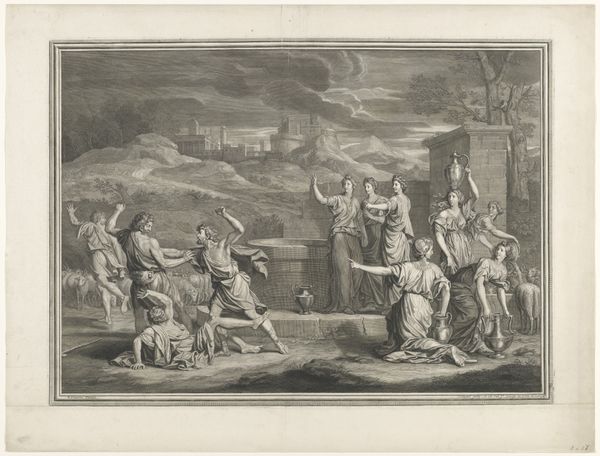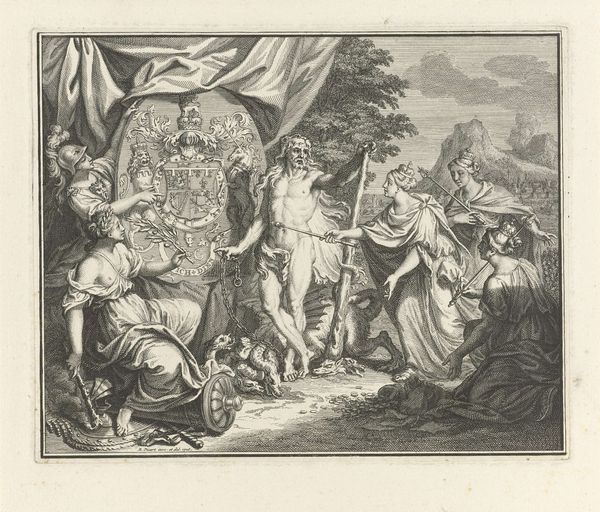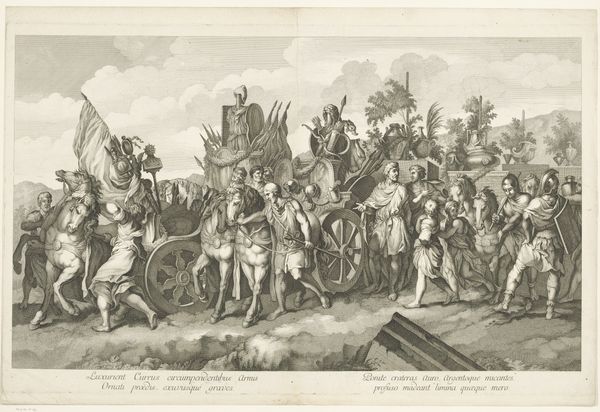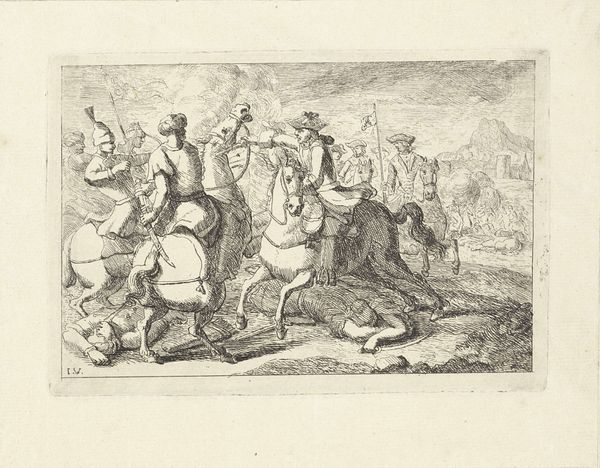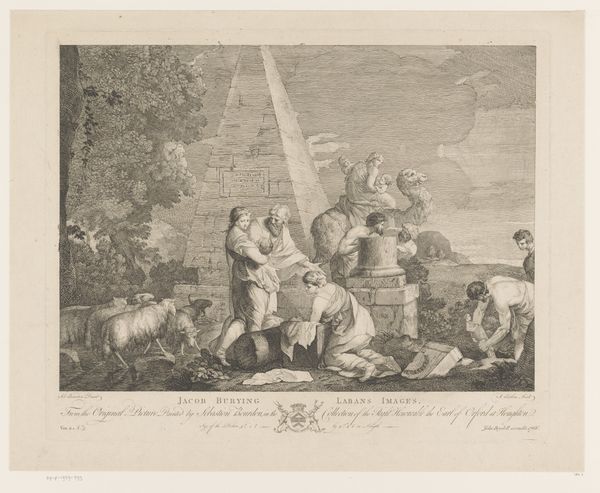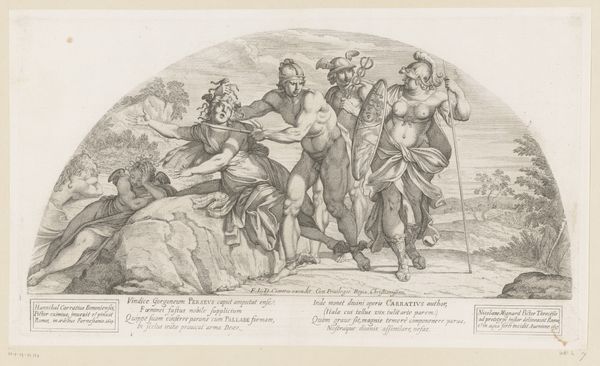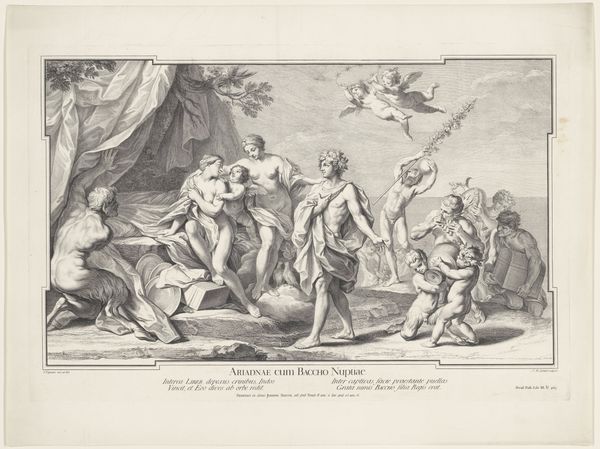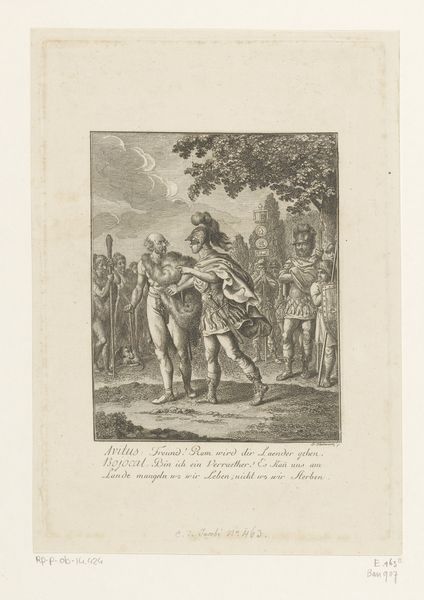
engraving
#
allegory
#
baroque
#
landscape
#
classical-realism
#
figuration
#
line
#
history-painting
#
engraving
Dimensions: height 620 mm, width 968 mm
Copyright: Rijks Museum: Open Domain
Editor: This is "Military Procession with Fallen Soldier," an engraving by Domenico Rossetti, dating sometime between 1660 and 1736. It feels very staged, almost theatrical, with these figures frozen in place. How do you interpret the symbolism in a piece like this? Curator: Notice how the procession, almost a parade of power, is built upon a fallen figure. The imagery suggests triumph built upon defeat, glory intertwined with sacrifice. The fallen soldier becomes a powerful symbol of loss, yet also contributes to the victor’s narrative. Have you considered how the landscape functions here? Editor: It does seem like the landscape is there mostly to add depth, creating a stage for the procession rather than playing an active role in the scene. Curator: Exactly. The artist utilizes classical realism not merely to depict but to monumentalize a specific historical, or perhaps allegorical, moment. Consider the repetition of horses and chariots. Do they convey momentum or static power? How might that repetition shape our perception of military might? Editor: I see your point. The repetition makes it feel grand, but the figures are so rigid it also seems... artificial? Almost as if Rossetti questions the very notion of idealized victory he portrays. Curator: Precisely. Even the 'triumph' seems tinged with melancholy, shadowed by the ever-present reminder of cost. The inclusion of allegory asks us to consider the long-term effects of conflict on both the victor and vanquished. We see continuity and consequences made visible through symbolic language. Editor: That gives me a lot to think about. It’s not just a historical depiction; it's a commentary. Curator: Indeed. Symbols invite viewers into a deeper meditation on our shared, often contradictory, cultural memories.
Comments
No comments
Be the first to comment and join the conversation on the ultimate creative platform.
